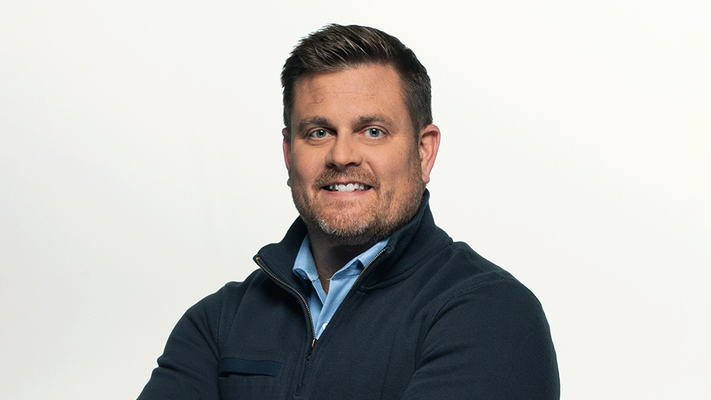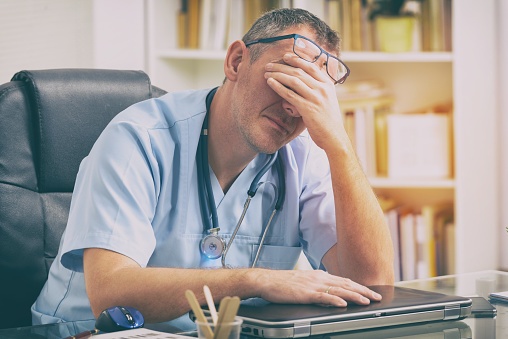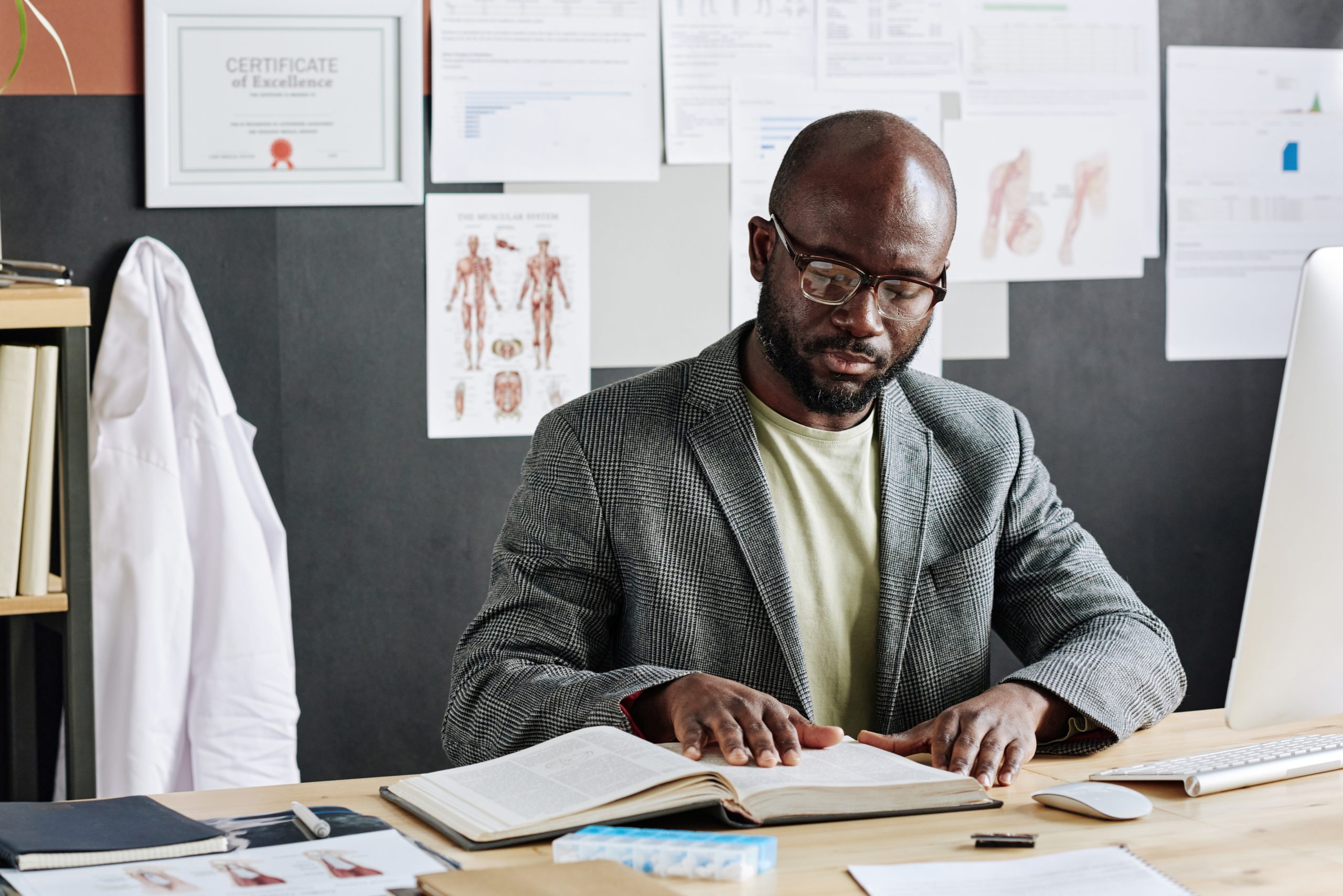James Archetto, Gaumard Scientific: The Value of High-Fidelity Patient Simulators
By Rob Dillard - Last Updated: August 1, 2023DocWire News recently spoke to James Archetto, Vice President of Gaumard Scientific, a Miami-based company that designs state-of-the-art patient simulators, task trainers, learning modules, and mixed reality solutions for teaching hospitals, nursing schools, medical military training, and emergency medical services. Mr. Archetto talked to us about the company, and its value to learners everywhere in the medical space.
DocWire News: Tell us about Gaumard Scientific.
James Archetto: Sure. Gaumard is a privately held family based company in Miami, Florida. The company was founded in the 1940s by a British physician and what he realized with his army medics in the British military was that he just didn’t have the proper tools to train them. He didn’t have the proper training devices. So he proceeded to invent some and the first one was a synthetic skeleton. It was very difficult as you might guess, to get a skeleton. So he created the first synthetic skeleton.
Then he was with the military in Africa, he came to realize the very high maternal morbidity and mortality rates among women and babies. He actually invented the first birthing simulator and it was very simple. It was simply a box with a clear coating on it with some female reproductive organs drawn on it. But nonetheless it showcased how a baby moved from the uterus through the birth canal and helped the local civilians identify how a baby was born and how they could assist with their deliveries. From there, it’s turned into a multi-national company, and we do have products all over the world now ranging from very simple to very sophisticated.
What is a high-fidelity patient simulator, and what value does it have for learners?
Rob, think of fidelity as realism. So a high fidelity patient simulator is a very realistic patient simulator. What that means is this simulator will look very much like a human. As an example, our highest fidelity female simulator is a birthing simulator and she actually will deliver a baby, and you can imagine the benefits of this in training obstetricians, gynecologists, nurses and midwives. Likewise, our most realistic adult male simulator now has the ability to turn his head, move, talk, and we’ll get into some of these in a little bit, but it really is that realism. That’s so important because it really brings the learner in to this immersive learning experience and allows the learner to really understand what a patient is going through. It allows them not just to practice a clinical skill such as an intramuscular injection or an IV, but it really immerses them in the patient and allows them to practice complex thinking skills.
In 2021 Gaumard launched Obstetric MR for Victoria. Tell us about Victoria and how Gaumard used the latest technology available to bring a new level of learning to the forefront.
In 2021, we did launch what we’re calling Obstetric MR and MR is for mixed reality. You’ve heard a lot about virtual reality, augmented reality. What mixed reality does is it truly incorporates both the digital world and the physical world together. The adult patient simulator, female simulator, that I was describing is that Victoria. So what it does is we partnered with Microsoft using the HoloLens and the HoloLens allows the learner to actually see inside Victoria and see the baby in utero. What that allows is the learner to really understand what’s taking place.
Here’s an example of how that technology is incorporated. There’s a complication, not a very common one, but it does happen and it’s called shoulder dystocia, D-Y-S-T-O-C-I-A. That’s when the baby’s shoulder gets caught on the mom’s pelvis as it’s moving through the birth canal. Well, it turns out that, that’s a critical complication for baby because it obstructs oxygen flow and the physician, nurse midwife only have about two minutes to treat that baby.
What Obstetric MR allows the learner to do is see the baby and then there are a series of maneuvers that can take place that will allow the shoulder to be released. What MR, this mixed reality system does is it provides visual clues for the learner. So when the learner provide this procedure properly, such as moving the mom’s legs or applying pressure, looking inside the mom now her pelvis will turn green digitally in the HoloLens. That’s the clue to the learner, ah, I’ve performed the procedure correctly and now the baby will be released and delivered normally. So that’s something that hasn’t been in the industry, this is the first time that this has been incorporated into the industry and it truly is a new level of learning that learners just haven’t been able to experience before.
More recently, Gaumard launched HAL S5301 – a high-fidelity adult male. What new features does HAL S5301 bring to learners?
Yes, recently we just launched this new model, HAL 5301 and he is the highest fidelity adult male simulator in the world. He now has capabilities that have never existed. For example, conversational speech, which is powered by artificial intelligence, AI. The benefit of that is the learner can have a conversation with HAL. HAL, how are you feeling today? I have a headache or HAL, what hurts today? Oh, my chest, I have pain in my chest. Hal can actually answer those questions and truly immerse the learner into that.
In addition, his head turns, his mouth moves when he speaks, his eyes blink, his pupils constrict and dilate at different rates and he can move his arm. Now the benefit of that in bringing these features to learners is that now learners are not only immersed in this experience, but there are new capabilities and new critical thinking skills such as how do we assess for stroke? So now HAL provides clinical conditions that emulate stroke, which is very difficult to diagnose. But by having a conversation with him, allowing HAL to grip your hand and squeeze and watching his arm moves, looking at his pupils, seeing if his face droops, now they can start to understand that maybe there is a neurological component to what HAL’s experiencing today, and that’s never existed in the industry before. So we’re really proud to be able to bring that technology to the market, to ensure that learners then have this capability.
What other simulators does Gaumard offer learners, and how do they benefit healthcare education?
We’ve been discussing now, these very sophisticated simulators, birthing simulators, stroke simulators, and how that immerses the learner into these critical thinking skills and complex, low frequency, high criticality complications. But there’s a spectrum of simulation. Going from very basic, as I mentioned earlier, how do I practice in an IV to CPR. We also have CPR simulators that actually provide a report showcasing how the learner performed with CPR. We all know the basics of it, but actually it is more sophisticated in terms of compression rate, compression depth, ventilation, and how much volume is being ventilated. So we can actually catalog all of that and provide a report to the learner. So it’s really quite a broad spectrum Rob, in terms of the simulators. In fact, we have over 300 different learning aids ranging from, as I mentioned, very basic to very sophisticated.
During the COVID-19 pandemic how did learning change – in terms of COVID specific training for learners and learners not having access to hospitals for training?
COVID really did change not only our industry, but industry in general, and with medical education, it changed substantially. We were really forced to assess how are learners going to benefit from clinical simulation? One of the biggest changes was medical students and nursing students gain much of their clinical training in hospital. During COVID, that was really closed down. These students were not deemed critical employees, so they didn’t have access to hospitals. So hospitals and schools had to reassess how are learners going to get this clinical education? Well, schools have simulation labs or learning centers where these simulators are housed, and what they realized is that even though the students couldn’t go into the hospital for clinical training on patients, as we’ve been discussing, clinical simulation is critical to this educational process. So the way a simulation center is set up, an educator can sit behind a glass wall and a learner can go into an educational space and practice on the simulator. The educator then can observe and so schools really began implementing these new practices, allowing remote learning.
We’ve discussed OB MR. So using that HoloLens, we could actually work, or the educators could actually work remotely and help educate the students. Likewise, these simulators that we’ve been discussing operate via radio frequency. They’re actually not connected to the tablet or computer that controls them. So the learner could be in a different building from the educator or the educator could be in a home office operating the simulator from this tablet. So COVID really changed this educational process of 20 students in a classroom observing what takes place to individualized training often from remote centers. I think Rob, a lot of this is here to stay actually, because we’ve learned quite a bit about this. As I mentioned, learners don’t need to sit in a classroom for didactic sessions. They can all be online now with a professor anywhere really conducting a lecture. That clinical training now can be broken down to clinical simulation, in addition to hands on with patients.
Any closing thoughts?
Clinical simulation is a key educational adjunct and we often don’t think of it. We often think of clinical education is exclusively on patients. However, there are several scenarios that can’t be practiced on a patient and we’ve discussed many of them such as stroke and birth, and some of these critical complications, that can be practiced long before a learner ever gets to see a live patient. So clinical simulation is a critical adjunct to medical education.







 © 2025 Mashup Media, LLC, a Formedics Property. All Rights Reserved.
© 2025 Mashup Media, LLC, a Formedics Property. All Rights Reserved.